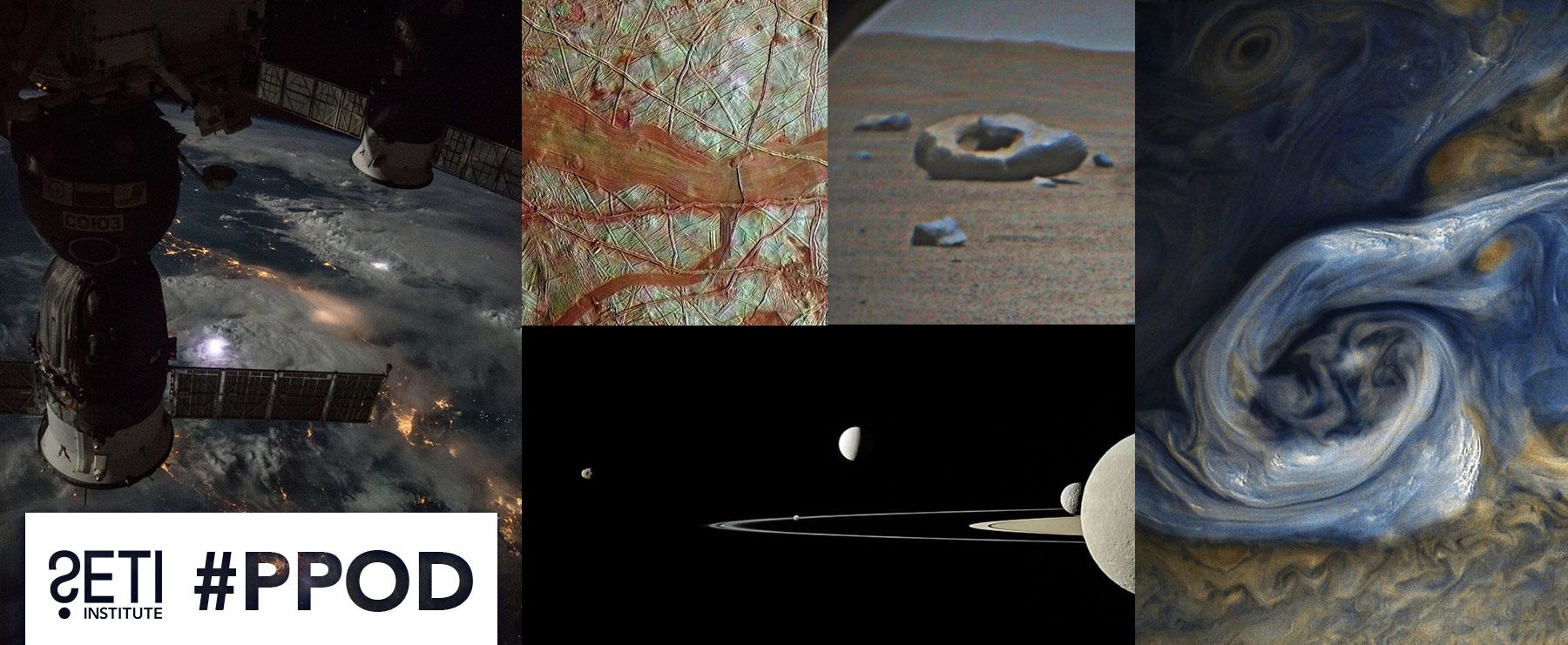
Planetary Picture of the Day
Week of June 26, 2023
Storms on Earth and Jupiter, Saturn and five of its moons, and that weird, donut-shaped rock on Mars.
Monday, June 26, 2023
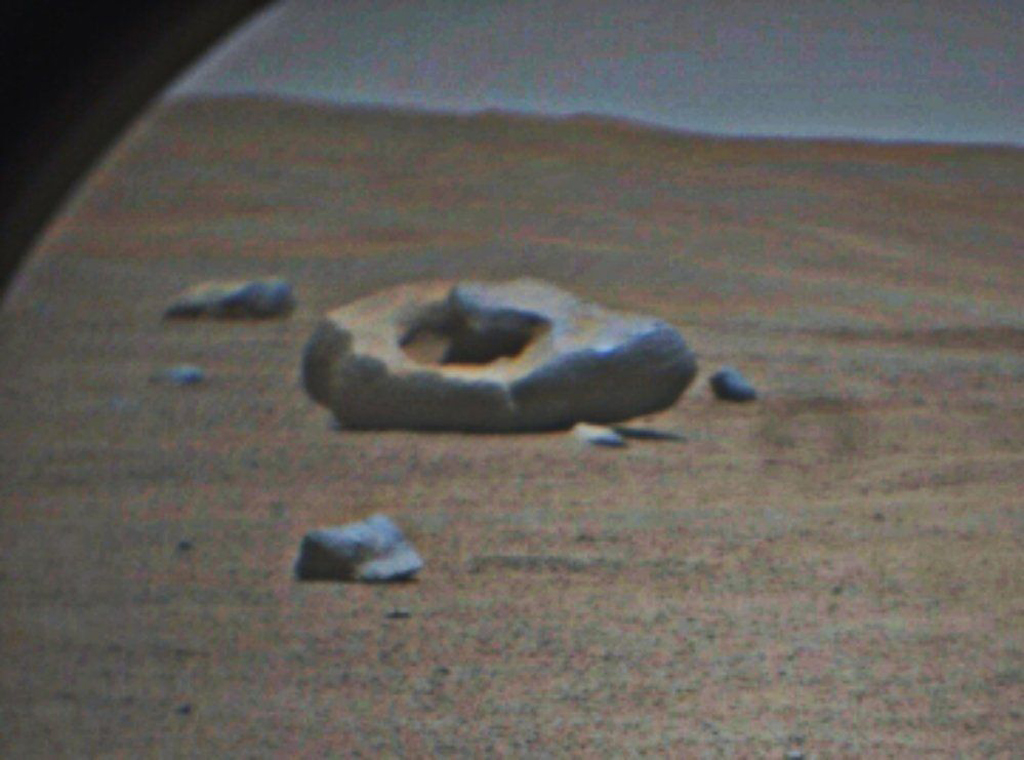
Possible Meteorite on Mars
NASA's Perseverance rover recently took a picture of a donut-shaped rock off in the distance. The unusual rock could be a large meteorite alongside possible smaller pieces. The photo was taken using the SuperCam Remote Micro-Imager on 23 June 2023 (Sol 832).
Tuesday, June 27, 2023
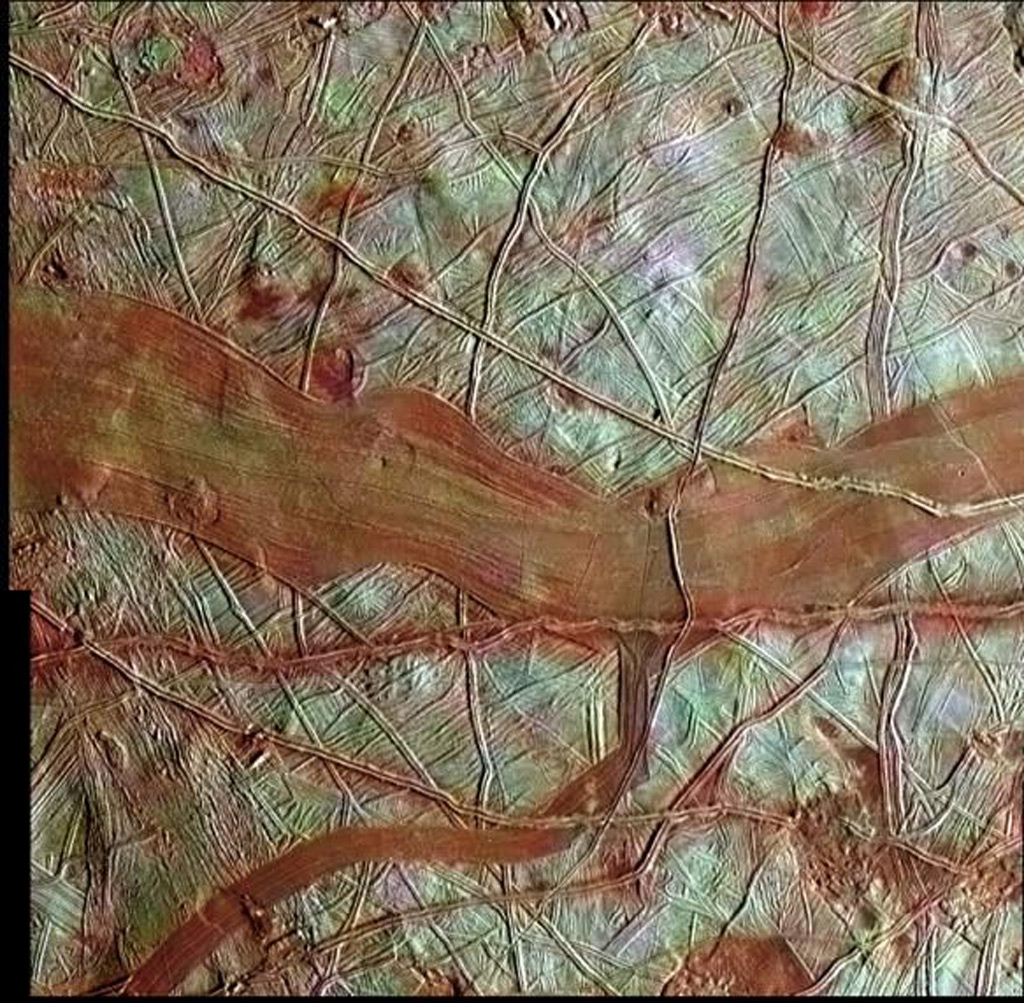
Reddish Bands on Europa
This colorized image of Jupiter's moon Europa is a product of clear-filter grayscale data from one orbit of NASA's Galileo spacecraft, combined with lower-resolution color data taken on a different orbit. The blue-white terrains indicate relatively pure water ice, whereas the reddish areas contain water ice mixed with hydrated salts, potentially magnesium sulfate or sulfuric acid. The reddish material is associated with the broad band in the center of the image, as well as some of the narrower bands, ridges, and disrupted chaos-type features. It is possible that these surface features may have communicated with a global subsurface ocean layer during or after their formation.
The image area measures approximately 163 km by 167 km. The grayscale images were obtained on November 6, 1997, during the Galileo spacecraft's 11th orbit of Jupiter, when the spacecraft was approximately 21,700 kilometers from Europa. These images were then combined with lower-resolution color data obtained in 1998, during the spacecraft's 14th orbit of Jupiter, when the spacecraft was 143,000 km from Europa.
Wednesday, June 28, 2023
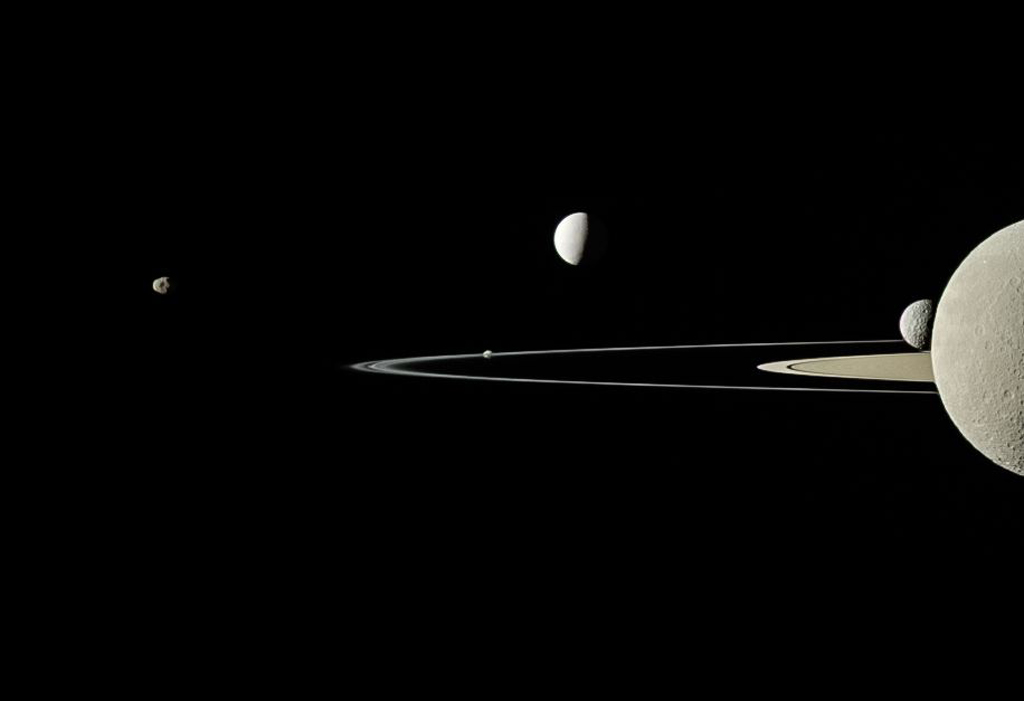
Five Moons and Saturn
On July 29, 2011, Cassini captured five of Saturn’s moons in a single frame with its narrow-angle camera. This is a full-color look at a view that was originally published in September 2011.
Moons visible in this view: Janus (179 kilometers across) is on the far left; Pandora (81 kilometers across) orbits just beyond the thin F ring near the center of the image; brightly reflective Enceladus (504 kilometers across) appears above center; Saturn's second largest moon, Rhea (1,528 kilometers across), is bisected by the right edge of the image; and the smaller moon Mimas (396 kilometers across) is seen just to the left of Rhea.
This view looks toward the northern, sunlit side of the rings from just above the ringplane. Rhea is closest to Cassini here. The rings are beyond Rhea and Mimas. Enceladus is beyond the rings. The view was acquired at a distance of approximately 1.1 million kilometers from Rhea and 1.8 million kilometers from Enceladus.
Thursday, June 29, 2023
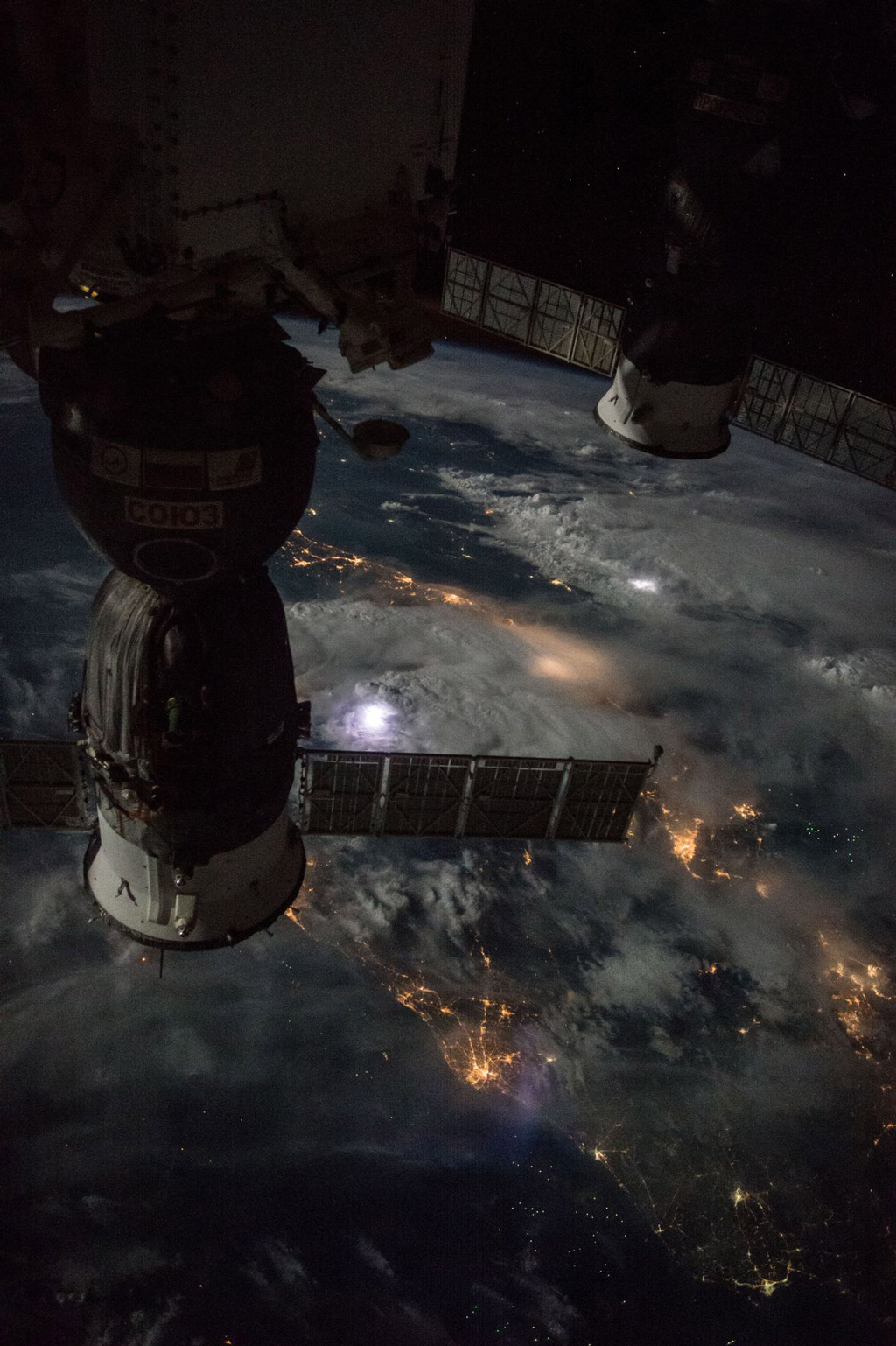
Thunderstorms Visible During a Nighttime Pass
The International Space Station flies approximately 250 miles over thunderstorms visible during a nighttime pass. Lightning can be seen flashing brightly inside the clouds below. A Russian Soyuz spacecraft (left) and Progress spacecraft (right) are seen in the foreground. Taken on 18 September 2016.
Friday, June 30, 2023
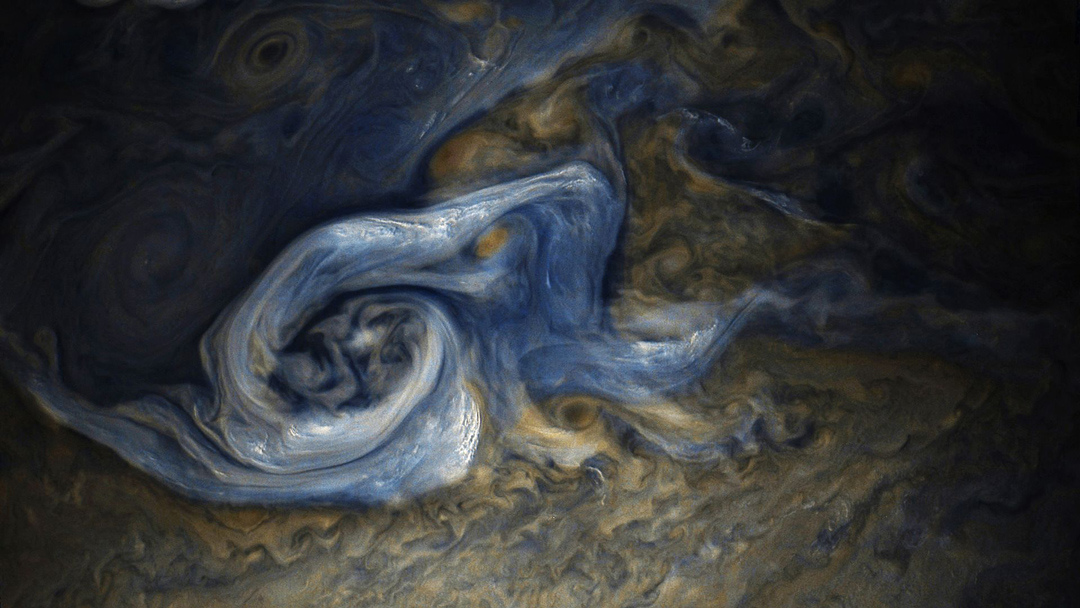
Jovian Tempest
This color-enhanced image of a massive, raging storm in Jupiter’s northern hemisphere was captured by NASA’s Juno spacecraft during its ninth close flyby of the gas giant planet.
The storm is rotating counter-clockwise with a wide range of cloud altitudes. The darker clouds are expected to be deeper in the atmosphere than the brightest clouds. Within some of the bright “arms” of this storm, smaller clouds and banks of clouds can be seen, some of which are casting shadows to the right side of this picture (sunlight is coming from the left). The bright clouds and their shadows range from approximately 4 to 8 miles (7 to 12 kilometers) in both widths and lengths. These appear similar to the small clouds in other bright regions Juno has detected and are expected to be updrafts of ammonia ice crystals possibly mixed with water ice.





